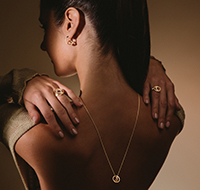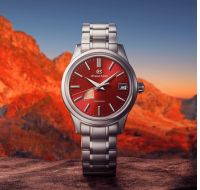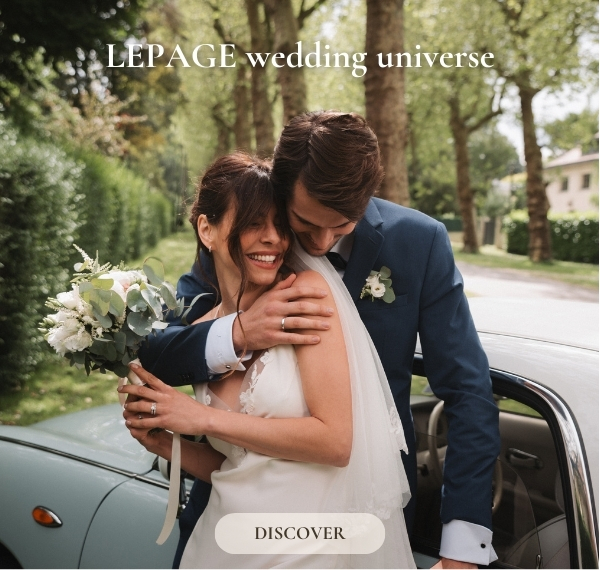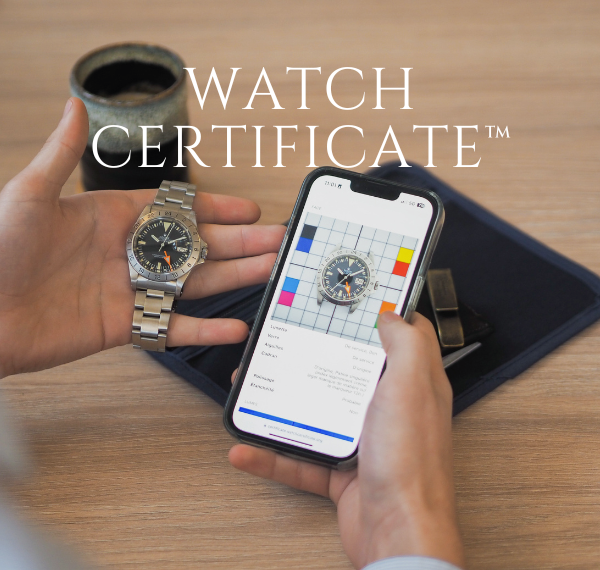No results for your search

LEPAGE solitaires
Auguste solitaire in rose gold and diamonds
Ernest engagement ring in white gold and diamonds
Ernest engagement ring in white gold and oval-cut ruby
1922 engagement ring in white gold and diamond
Jolie-Rose engagement ring in yellow gold and diamonds
Demoiselle engagement ring in rose gold and diamonds
Jolie-Rose engagement ring in rose gold and diamonds
Première Dame engagement ring in rose gold and diamonds
Gaston engagement ring in white gold and diamonds
Aristide engagement ring in yellow gold and diamonds
Albert engagement ring in yellow gold and diamonds
Leon engagement ring in yellow gold and diamonds
Leon engagement ring in rose gold and diamonds
Marcel engagement ring in white gold and pear cut diamond
Emotion engagement ring in white gold and oval cut diamond
Emotion engagement ring in yellow gold and diamond
Albert solitaire ring in white gold with sapphire and diamonds
Madame Rose engagement ring in yellow gold, sapphire and diamonds
Albert engagement ring in white gold, ruby and diamonds
Aristide engagement ring in yellow gold, emerald and diamonds
Demoiselle engagement ring in yellow gold, sapphire and diamonds
Coquette engagement ring in white gold, sapphire and diamonds
Pompadour engagement ring in white gold, sapphire and diamonds
Promesse engagement ring in rose gold and diamond
Romeo ring in rose gold and yellow sapphire
Cupidon engagement ring in rose gold and diamond
Demoiselle engagement ring in yellow gold and diamonds
Juliette ring in white gold and yellow sapphire
Romeo ring in white gold and yellow sapphire
Jackie engagement ring in rose gold and diamond
Emotion engagement ring in yellow gold and oval cut sapphire
Albert engagement ring in yellow gold, emerald and diamonds
Albert engagement ring in white gold, emerald and diamond
Aristide engagement ring in white gold, emerald and diamonds
Idylle engagement ring in rose gold and sapphire
Because we know that giving a ring is a delicate task, Lepage guides you in your quest for the solitaire ring that will show your love for her.
The solitaire: engagement ring par excellence
Traditionally, the engagement ring takes the form of a solitaire, which is a ring set with a single stone, usually a round brilliant cut diamond. Although today there are many interpretations of the engagement ring, which can take the form of a creative ring such as the famous OUI ring by Dior, or the Move Uno Messika ring and the Singulière ring by So Shocking, the solitaire ring remains a safe bet if you want to be sure not to get it wrong. In order to make your wedding proposal unforgettable, the solitaire you choose must above all be designed to please the bride-to-be and reflect her tastes and personality. To meet all your expectations, Lepage has developed many different models of this so symbolic ring, so that at least one of its pieces is the right one for her!
The stone cut
Vintage inspired with a pear or navette cut centre stone, classic with a round or oval cut diamond, bold with a ring set with a cushion or princess cut stone: everything is possible! Among the The size (in the sense of the way it is cut, i.e. its shape) of the stone that you like, and above all that she will like, is only one of the parameters that will enable you to find a solitaire that meets your desires. You still have to choose the colour of the gold that will shape the setting, and the stone itself that will adorn the jewel.
The choice of gold colour
Concerning the gold, all Lepage creations are made of 18k gold (750 gold), which is the finest quality of gold that can be found. It is called "18k gold (750 gold)" because it is actually composed of 75% pure gold and 25% of other precious metals, which serve to give it a specific colour and strength. In fact, pure gold is too soft and malleable to be used as such, so it is combined with silver, copper or palladium to be worked and give life to jewellery that will not deform when worn. In order to limit our ecological footprint as much as possible, we use recycled gold to make our jewellery. Some of this gold is bought back directly from our customers, before being melted down for reuse. In this way we give a second life to your old jewellery, while preserving the planet's resources.
White gold
White gold, before being treated, is also called ""white gold"". Indeed, it is the last step in the preparation of the jewel that will give it its beautiful bright colour! This last step, rhodium plating, consists of depositing a very thin layer of rhodium (an extremely rare and precious metal) on the entire jewel, so as to cover it. This operation should be repeated regularly, every two or three years, so that your jewel never loses its beauty and remains as radiant as on the first day! A white gold solitaire will be a timeless and timeless piece of jewellery, which will be easy to wear whatever the occasion.
Yellow gold
With its sunny aura, yellow gold has been used for thousands of years to make jewellery, especially wedding and engagement rings. Radiant, it magnificently enhances the stone that comes to adorn it, whether that stone is a brilliant diamond or an intensely coloured gemstone.
Rose gold
To obtain 18k rose gold (750 gold), the alloy of which it is made has a larger proportion of copper. It is from this metal that the soft pinkish hues known to rose gold come. From one Maison to another, the shade of pink can vary from very light to more pronounced, depending on the amount of copper in the alloy. Each brand therefore offers rose gold jewellery in slightly different colours! Less cold than white gold, and less classic than yellow gold, rose gold is a good compromise if you are looking for a modern and precious solitaire. Today, rose gold is one of the most used metals in jewellery, and is increasingly popular with jewellers. In order to know the quality of the gold in which your jewel is made, you can check the hallmarks that have been stamped on the piece. The first type of hallmark is the so-called guarantee or title hallmark. The Eagle's head hallmark guarantees a 750 thousandths gold grade, while the hallmark representing a scallop identifies 585 thousandths gold jewellery (which formerly corresponded to the denomination "14k"), and the trefoil-shaped hallmark concerns 375 thousandths gold jewellery (or formerly "9k"). These official authentication hallmarks are accompanied by the master hallmark, which is that of the jeweller who made the piece, attesting to the provenance and quality of the jewel.
The type of stone
Did you know. There are only four precious stones: diamond, sapphire, ruby and emerald. All other natural stones are called "gemstones", or "ornamental stones" (the latter are also known as "hard stones"). Fine stones (formerly called "semi-precious", but this designation is no longer permitted) have the characteristic of being transparent, unlike ornamental stones which are opaque. Thus, in the family of fine stones we find gems such as aquamarine, tourmaline, garnet, topaz, amethyst or citrine, and in the family of ornamental stones lapis lazuli, tiger's eye, malachite, turquoise, pyrite, carnelian or onyx. The last distinction that can possibly be made concerns the so-called organic stones mother-of-pearl, amber and coral, all of which come from living organisms such as shells and trees.
The diamond
Precious among the precious, diamonds are the rarest natural stone. Formed from carbon under extreme geological conditions over thousands or even millions of years, diamonds are a wonder of nature that can only come into being under certain very specific conditions. Not very brilliant in its rough form, the gem reveals all its brilliance once cut according to specific proportions, which gives it its shape: round, or "brilliant", the most classic cut, oval, pear, marquise, princess, cushion... There are many ways to highlight the purity and beauty of the stone. Depending on its colour, ranging from D (extra white) to Z (yellowish), its purity (depending on the impurities, the natural ""inclusions"" trapped in the stone that come to light during its formation), its carat weight and its cut (the shape given to it), the value of a diamond can be multiplied. At Lepage we only use diamonds with D to F colour (i.e. very white), with a minimum of SI quality (Small Inclusion, very small imperfections, visible with a x10 magnifying glass). Every week, our expert gemologists go to the famous Antwerp diamond exchange to select the stones that will be used to set our jewellery. Each gem is selected with the greatest care, one by one, for its brilliance, colour, size and weight. For all stones above 0.5 carat, an HRD or GIA certificate attesting to its characteristics and origin is provided with the jewel, in order to guarantee optimal traceability. A diamond solitaire is THE proposal ring par excellence: you can't go wrong!
The coloured stones: sapphire, emerald and ruby
These precious stones, also called coloured stones, bring all its cachet to a creation. Existing in many shades, sapphires, emeralds and rubies are rare gems imbued with symbolism. Sapphire Belonging to the corundum family, like ruby, sapphire is a precious stone that comes in many colours. Essentially known as a blue sapphire, there are actually pink, orange, yellow, green, purple sapphires, and even a unique shade called padparadscha, oscillating between pink and orange. A symbol of fidelity, and elevation, the blue sapphire is often associated with celestial purity and protection. Giving a sapphire ring is therefore a very beautiful proof of love and commitment! Emerald With its bewitching green colour, the emerald has been one of the most coveted gems for thousands of years. A member of the beryl family, emerald is a gemstone with natural roughness, known as "inclusions", or "emerald gardens". These inclusions, forming a light white veil, are elements that contribute to the uniqueness of each stone and make them unique! Symbolically, the emerald is the stone of love, wisdom and rebirth. Giving a ring set with such a precious stone is a way of conveying strong feelings and proving one's attachment to someone dear to one's heart... Ruby Like the sapphire, the ruby belongs to the corundum family. Ranging from almost pink to a deep red called pigeon's blood, the rarest colour there is for a ruby, this gemstone looks stunning when set in a ring. Pairing equally well with white gold, yellow gold and rose gold, the ruby expresses passion and unconditional love.
Lepage is here to help
Need help finding the solitaire of your dreams? Contact our teams by email, phone, or visit one of our boutiques located in Lille, Le Havre and Rouen: our sales consultants will be happy to guide you in your decision, and answer all your questions! Moreover, if you have not found a solitaire that you like among all our models, or if you have a family jewel that you would like to rework in order to make a custom creation, you should know that we offer a creation service on demand. Our experts will work with you to make all your wishes come true. You can find this service directly in the Lepage shop, or send us a request by email to be directed to our creation service.





.jpg)
.png)

